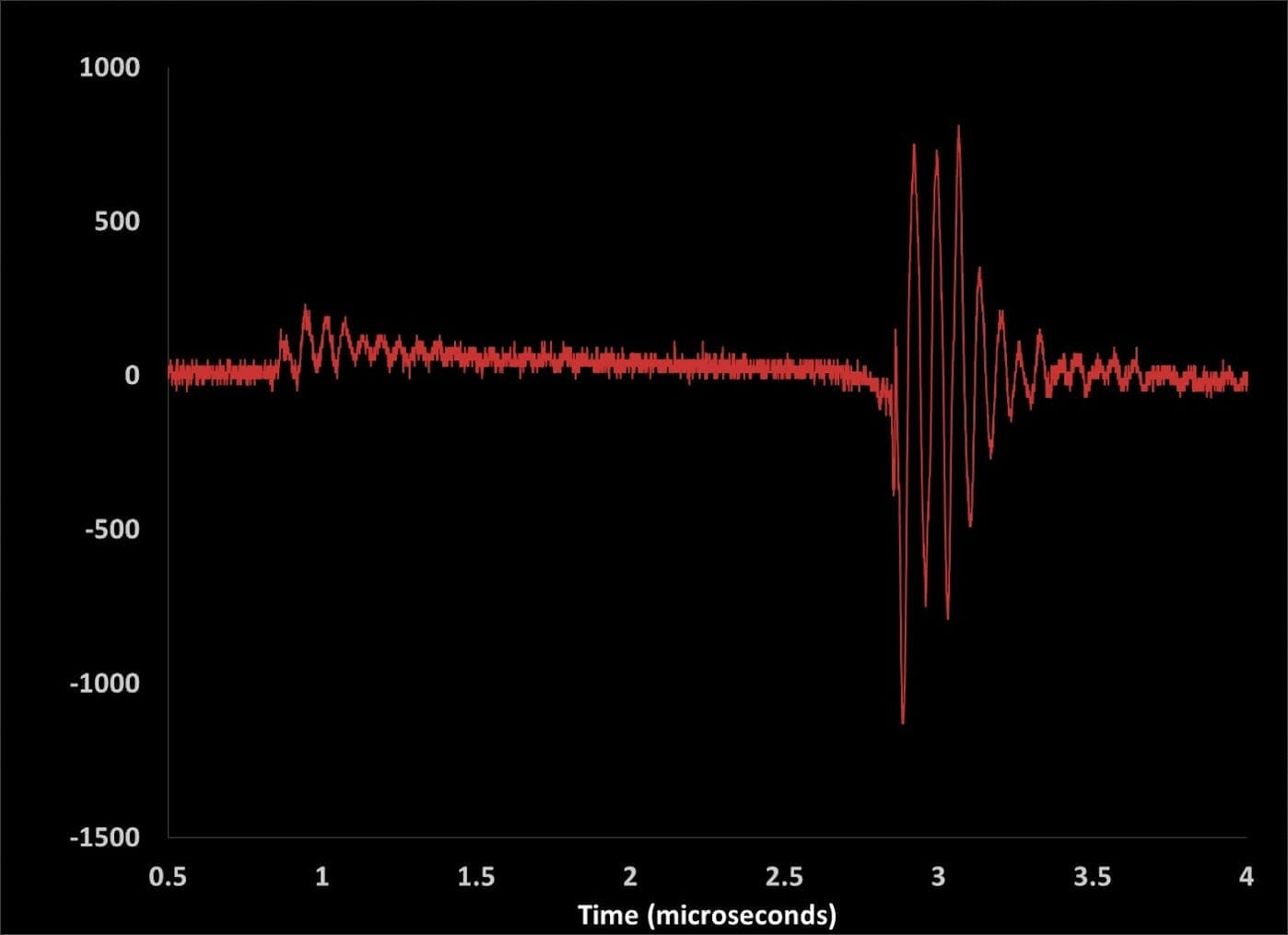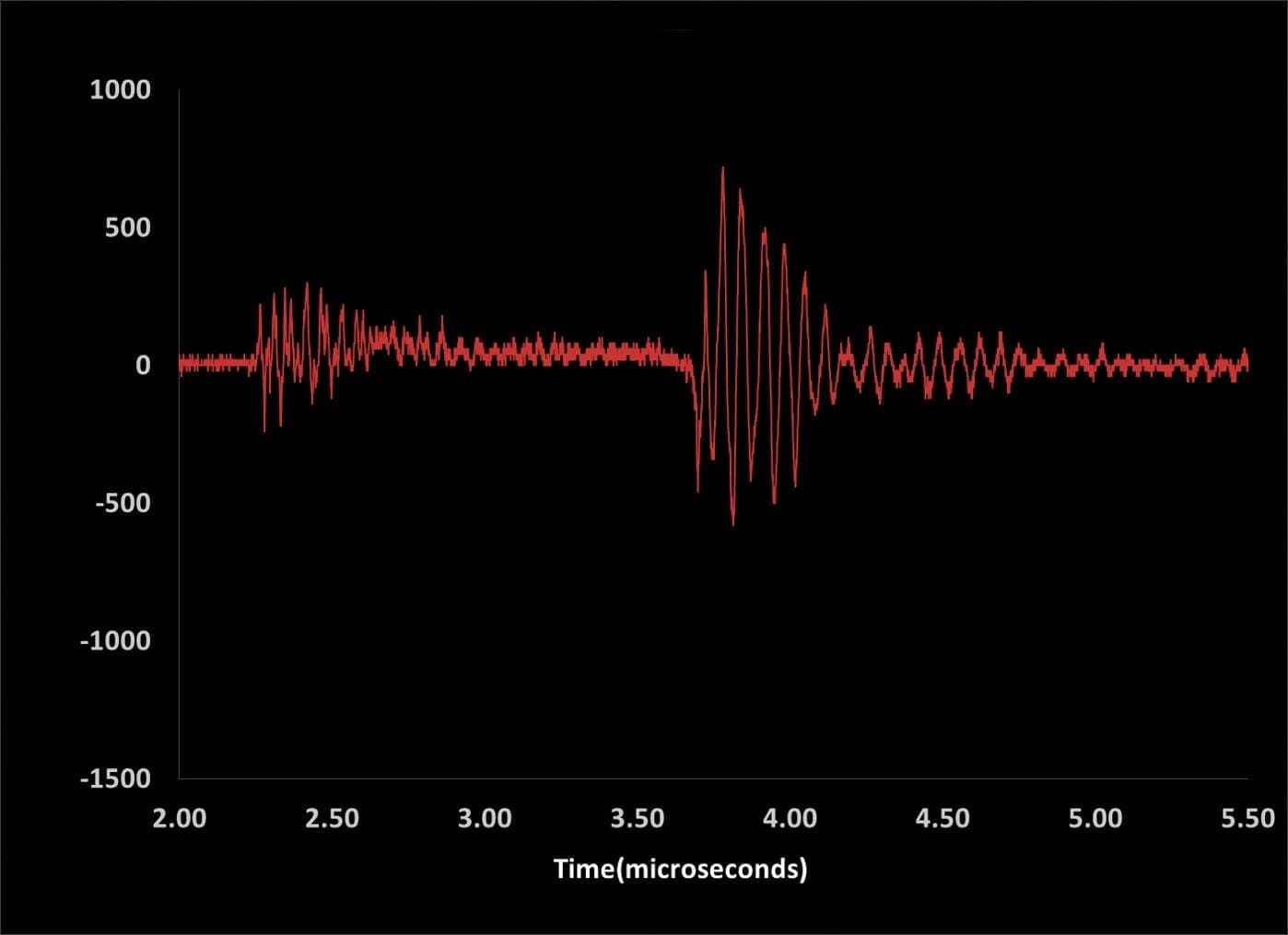Science is a collective effort and at this conference, as others, LPPFusion received valuable information from our colleagues. While many devices are used in fusion energy research, the plasma is the same everywhere, so results with one device can be used in experiments with others. In particular Lerner got vital clues to the next steps in optimizing FF-2B function and curing its early “teething” problems.
The biggest of these problems is an uneven start of the discharge, indicated by big, rapid oscillations in current (Fig. 3). With an uneven start, different parts of the current sheath arrive at the pinch, where the plasmoid forms, at different times. This means that the region that contains all the current never gets very small, preventing high compression, high density and thus high fusion yield. Only if the compression is symmetrical do we expect to see the gains in fusion yield that low impurity will bring.


Figure 3. (a) The large, rapid early oscillations (around 2.2-2.6 microseconds) in shot 6, July 8, 2019 with FF-2B indicates an uneven breakdown. The rate of change of the current is recorded here in units of 10 A/ns. Uneven breakdown leads to poor compression, indicated by the slow drop in current at the pinch (at 3.6 microseconds) (b) Using a nitrogen-deuterium mix with preionization in FF-1 led to small, slow oscillations in shot 6, June 7, 2016 with FF-1, leading to a more even breakdown and better compression, indicated by fast drop in current (at 2.9 microseconds).
With FF-1 and its tungsten electrodes, the LPPFusion team was able to minimize the early oscillations and get more even “breakdown” (when the resistance of the neutral gas “breaks down” as it turns into an electrically conducting plasma) by using a combination of nitrogen and a preionization current. The aim of the tiny preionization current that turn on minutes before each shot is to “smooth the path” for the main current by producing small numbers of electrons between each cathode vane and the anode. The idea is to make it so easy for each part of the current to start flowing from each of the 16 vanes that they all start at once. The role of the nitrogen in this process is to stabilize the preionization, as nitrogen is an insulating gas. This allows a higher steady preionization current, making the preionization more effective.
But at high temperatures, nitrogen reacts with beryllium to form the insulating solid beryllium nitride. So initially LPPFusion researchers did not use nitrogen out of concern that an insulating layer would erode quickly, the way the initial beryllium oxide layer did, producing lots of dust and, again, an uneven initial breakdown. Instead, we chose neon as the mixing gas as neon, a “noble gas”, does not react chemically at all.
At the conference, Lerner spoke with JET researchers Dr. Ewa Pewlec and Dr. Alice Widdowson, who told him that JET had also experimented with both neon and nitrogen, using them to cool the outer regions of the plasma that touches the beryllium walls. They found much better results with nitrogen and did not observe any detrimental reactions with beryllium. After the conference, literature searches confirmed that nitrogen—which is far less reactive than oxygen—has no known detrimental effects on beryllium and even appears to slow its erosion. Neon, while non-reactive, is not a good substitute for nitrogen, as it does not “attach”, or grab onto, electrons, slowing them down and thus stabilizing the current. (Lerner also had a number of good discussions with fellow plasma focus researcher Dr. Marek Sadowski, who works with the large PF-1000U device in Warsaw.)
Based on this new information, LPPFusion intends to use nitrogen to duplicate with beryllium the even breakdown achieved in the FF-1 device. For safety’s sake, we will spend a day introducing small amounts of nitrogen and testing its effect during shots. Then we’ll move on to the 4-5% mixes that worked well with FF-1. We’ll be observing the effects on the initial stages of breakdown with a new set-up of our ICCD camera, which we will say more about in our next report.
